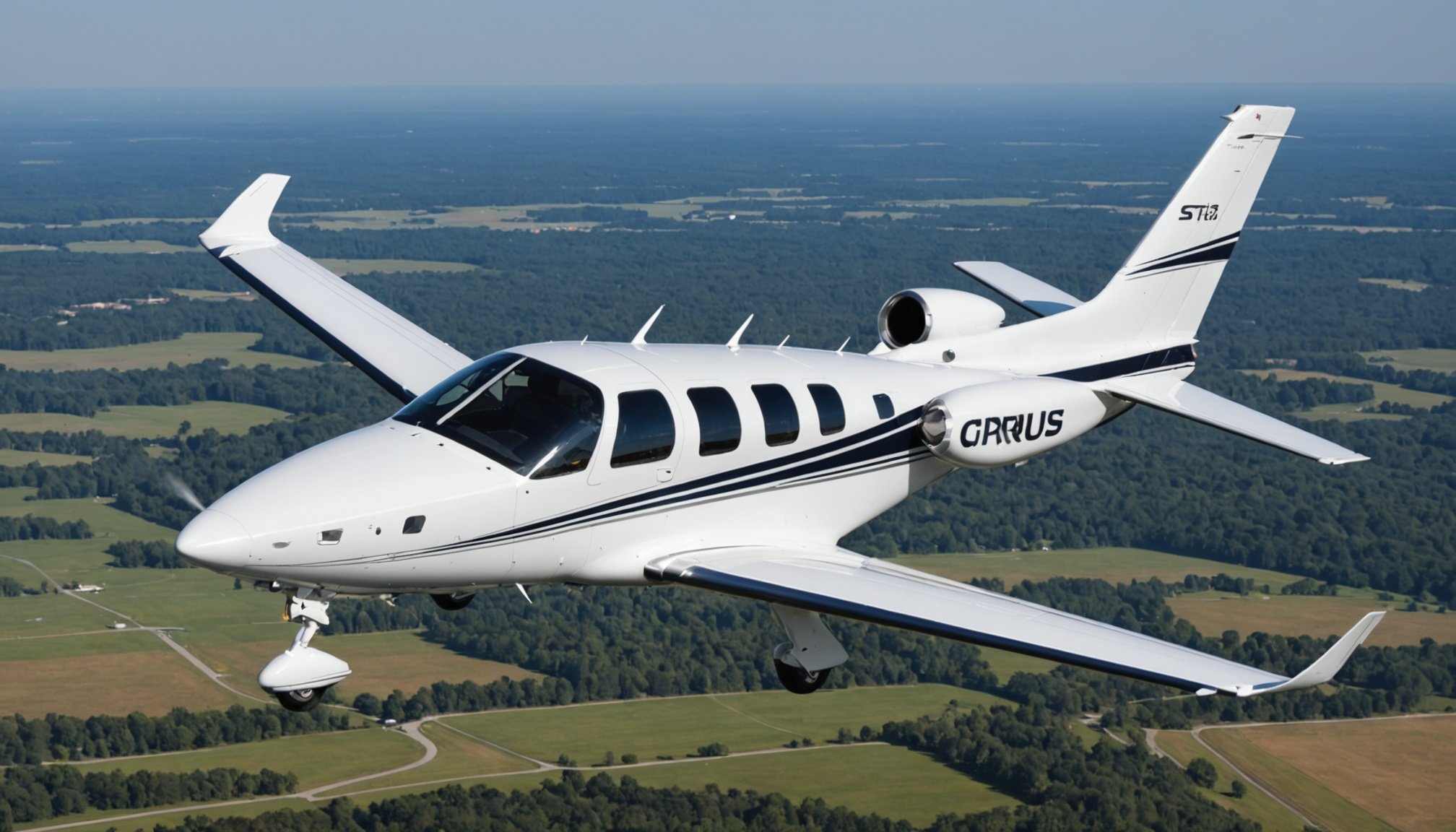The Cirrus Vision Jet redefines light personal aircraft with spacious cabins and cutting-edge safety features like the CAPS® parachute system and Safe Return™ autoland. Its advanced avionics, powerful engine, and in-flight connectivity create a seamless, efficient flying experience. Designed for comfort and performance, this innovative jet offers unmatched versatility for private pilots seeking reliability and ease in personal aviation.
Discovering the Cirrus Vision Jet: The Evolution of Light Personal Aircraft
a cirrus jet dramatically shifts the landscape of private aviation with its groundbreaking lightweight design and advanced safety features. Its FAA certification as the first certified single-engine civilian jet underscores its significance in aviation history. This achievement reflects not only pioneering engineering but also a focus on safety, exemplified by the Cirrus Airframe Parachute System® (CAPS®), which offers emergency protection often absent in comparable small jets.
Also to see : Essential steps for effective legionella compliance management
The cabin features the largest space class in its category, with panoramic windows and a modern interior designed for comfort. With aircraft models like the G2+ delivering up to a 2% increase in takeoff performance, operators benefit from improved versatility, especially at high-altitude airports. Its advanced avionics systems, including Garmin’s Perspective Touch+ flight deck, boost situational awareness and ease pilot workload.
The Vision Jet’s performance specs—a top cruise of 311 knots, range of over 1,200 nautical miles, and ease of operation—highlight its role as a leader in light personal jet aircraft.
Additional reading : Navigating CQC Registration: Your Guide to Seamless Support
Technical Specifications and Performance of the Cirrus Vision Jet
Dimensions and Cabin Comfort
The light personal jet aircraft category finds a leader in the Cirrus Vision Jet, with a cabin measuring 5.1 feet wide and 4.1 feet high, and a seating arrangement accommodating up to seven—typically five adults with additional space for children. Emphasizing cabin comfort in small jets, Cirrus’s use of carbon fiber and panoramic windows helps create a spacious, open atmosphere unique among jet seating capacity 3-10 options. Extensive jet interior customization options through the Xi Design Studio allow owners to tailor layouts, materials, and color schemes, from family-friendly to executive configurations.
Performance Data and Flight Capabilities
SF50 jet performance specs position the Vision Jet as a standout in compact jet performance: a top cruise speed of 311 to 345 knots, a personal jet cruising range of approximately 1,200 nautical miles, and a service ceiling reaching up to 31,000 feet. The single-engine jet advantages include efficient fuel use, streamlined jet maintenance requirements, and better accessibility to varied airfields, with takeoff and landing distances under 2,100 feet. Its unique V-tail and optimized wings further enhance jet aerodynamic design and overall performance.
Safety and Advanced Avionics
Jet safety features take center stage. The Vision Jet’s Cirrus Airframe Parachute System® (CAPS®) provides critical protection, aligning with innovations in ballistic parachute system technology. The Safe Return™ autoland system allows autonomous landings, enhancing emergency safety equipment standards. The advanced avionics systems—including the Perspective Touch+ cockpit—support pilot awareness, with features such as weather radar, electronic flight instruments, and comprehensive communication links, confirming Cirrus’s place at the forefront of modern small jet design.
Cost, Ownership, and Market Position of the Vision Jet
Pricing and Operating Costs
The Cirrus Vision Jet is positioned as an innovative light personal jet aircraft, with base pricing starting near $1.9 million and extending beyond $2.5 million for higher-spec models and added features. Operating expenses remain notable—the SF50 jet performance specs reveal average fuel efficiency in personal jets: approximately 62 to 69 gallons per hour in cruise, ensuring favorable comparisons in cost per flight hour within the private jet ownership benefits segment. Maintenance costs are estimated at $30,000–$50,000 each year, and hourly flight expenses (fuel, maintenance, insurance) usually fall within $1,200–$1,500. When measured against certain turboprops and other compact jet performance benchmarks, Vision Jet remains competitive on both up-front and ongoing pricing.
Ownership Experience and Customization
Private jet ownership benefits extend beyond cost analysis. With pilot training for jets provided via immersive full-motion simulators, Cirrus Vision aircraft features help new pilots transition confidently into single-engine jet advantages. The JetStream ownership program offers lifecycle support, reducing jet maintenance requirements risk. Customization is sophisticated—the Xi Design Studio unlocks jet interior customization options and jet seating capacity choices. This level of personalization augments both comfort and jet resale value factors, enhancing the entire private aviation lifestyle.
Unique Features, Upgrades, and Future Developments
Standout Safety and Convenience Features
The Cirrus Vision Jet stands out in the light personal jet aircraft category with a comprehensive set of jet safety features, most notably its industry-leading ballistic parachute system—an innovation rare among jets. The advanced emergency safety equipment also includes the exclusive Safe Return™ autoland system. This empowers passengers with a single-engine jet advantages package that can autonomously land the aircraft if needed. Add to this SF50 jet performance specs like a seamless inflight connectivity platform: Gogo Wi-Fi and Flight Stream facilitate jet onboard communication systems, bolstering both safety and convenience in cross-country personal jet trips.
Model Variants and Upgrades
Recent models, such as the G2+ Vision Jet, feature enhancements in jet climb performance, improved weight management, and boost compact jet performance for high-elevation or hot conditions. Buyers can tailor their cabin comfort in small jets through various optional packages. With the Xi Design Studio, jet interior customization options range from luxury finishes to personalized layouts—unlocking private jet ownership benefits and greater jet passenger comfort for both executive and family configurations.
Future Trends and Innovations
Expect further evolution in fuel efficiency in personal jets, jet technology updates, and advanced avionics systems to meet stricter environmental impact of small jets regulations. Cirrus remains committed to innovations in light aircraft and modern aircraft certification standards shaping the future of private jet travel convenience and sustainable aviation.











